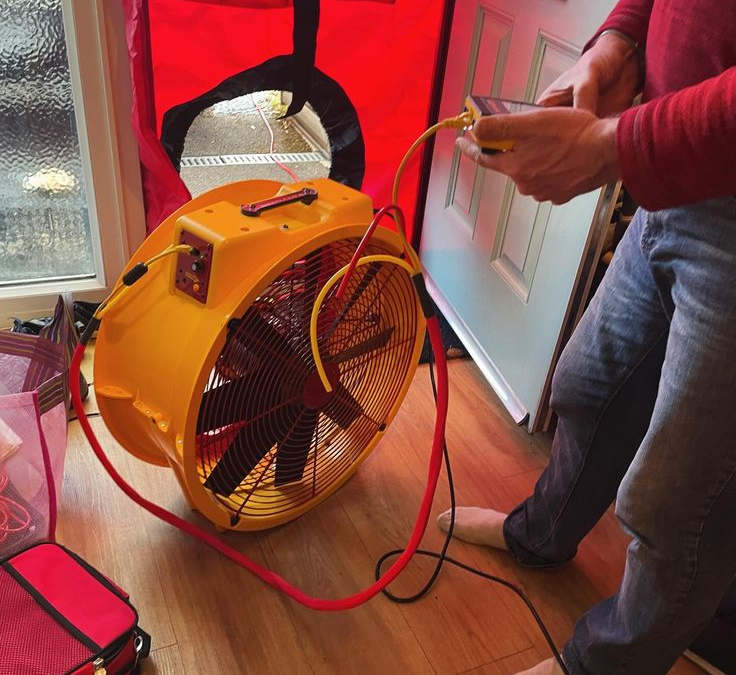Enhancing the air tightness of your home or office is essential for maintaining indoor comfort, improving energy efficiency, and reducing heating and cooling costs. Proper air sealing prevents drafts, moisture buildup, and the infiltration of external pollutants. It also extends the lifespan of your building by minimizing the risk of mold growth and structural damage due to moisture issues. Below are practical steps to improve air tightness through effective sealing, insulation upgrades, and air barrier solutions.
Identify and Seal Air Leaks
Air leaks can occur around doors, windows, electrical outlets, and other openings in your building’s structure. These gaps contribute to energy loss and fluctuating indoor temperatures. Sealing these areas can significantly enhance air tightness.
Key Areas to Check for Leaks:
- Doors and Windows – Apply weatherstripping and caulk to seal gaps around frames. Check hinges and locks for additional air gaps.
- Electrical Outlets and Switches – Install foam gaskets behind outlet covers to reduce drafts. Childproof plugs can further block airflow.
- Baseboards and Trim – Use caulk or expanding foam to fill cracks, especially in older buildings where materials have shifted over time.
- Pipes and Wiring Penetrations – Seal gaps around plumbing and electrical conduits with silicone caulk or expanding foam.
- Attic and Basement Openings – Close off any holes leading to unconditioned spaces using spray foam insulation. Inspect attic hatches and basement bulkheads for air leaks.
Upgrade Insulation for Better Thermal Performance
Effective insulation helps maintain indoor temperatures by preventing heat loss in winter and heat gain in summer. If insulation is inadequate, your HVAC system has to work harder to maintain comfort levels.
Recommended Insulation Upgrades:
- Attic Insulation – Adding fiberglass batts, cellulose, or spray foam helps minimize heat loss and improve overall efficiency.
- Wall Insulation – Blown-in or rigid foam insulation enhances thermal performance and reduces drafts.
- Basement and Crawl Space Insulation – Insulating these areas helps prevent cold floors, moisture issues, and heat loss.
- Ductwork Insulation – Wrapping HVAC ducts in insulation and sealing joints with mastic tape reduces energy waste.
- Floor Insulation – Insulating floors above unheated spaces like garages or crawl spaces prevents cold spots and enhances comfort.
Use Air Barriers to Strengthen Sealing
Air barriers prevent uncontrolled airflow between the interior and exterior, improving energy efficiency and temperature stability.
Effective Air Barrier Options:
- House Wrap – Reduces drafts and moisture infiltration while allowing controlled vapor escape.
- Spray Foam Insulation – Expands to seal gaps, acting as both an insulator and an air barrier.
- Airtight Drywall Systems – Caulked and gasketed drywall installations help maintain an airtight enclosure.
- Specialized Membrane Systems – Applied to modern buildings for superior airtightness and moisture control.
Improve Window and Door Efficiency
Old, poorly sealed windows and doors contribute to energy loss and discomfort. Upgrading and sealing these areas enhances air tightness.
How to Enhance Window and Door Performance:
- Upgrade to Double or Triple-Glazed Windows – Improves insulation and reduces drafts.
- Apply Window Films – Minimizes heat loss and improves air tightness.
- Use Heavy Curtains or Blinds – Adds an extra layer of insulation.
- Install High-Quality Door Sweeps – Prevents drafts at door bottoms.
- Replace Weatherstripping Regularly – Ensures long-term effectiveness against air leaks.
Optimize Ventilation While Maintaining Air Tightness
Sealing a building is important, but so is ensuring adequate ventilation to maintain healthy indoor air quality.
Ventilation Solutions:
- Energy Recovery Ventilators (ERVs) or Heat Recovery Ventilators (HRVs) – Provide fresh air while minimizing heat loss.
- Bathroom and Kitchen Exhaust Fans – Remove excess moisture and pollutants.
- Trickle Vents – Allow controlled air exchange without drafts.
- Smart Ventilation Systems – Adjust airflow based on real-time indoor air quality.
Conduct an Air Tightness Test
Professional air tightness testing can help identify problem areas and guide improvement efforts.
Testing Methods:
- Blower Door Test – Measures air leakage and identifies weak spots.
- Thermal Imaging Inspection – Detects heat loss areas through temperature variations.
- Smoke Pencil or Incense Stick Test – Reveals minor drafts by observing smoke movement.
- Infrared Scanning – Uses advanced imaging to pinpoint insulation gaps and leaks.
In Summary
Improving air tightness in your home or office enhances energy efficiency, indoor comfort, and air quality. By sealing gaps, upgrading insulation, using air barriers, and optimizing ventilation, you create a healthier and more cost-effective indoor environment. Regular inspections and air tightness tests ensure long-lasting benefits, helping you maintain an efficient and comfortable space for years to come.


Recent Comments